Daily field reports play a vital role in the HVAC industry by providing essential documentation of activities and progress on jobsites. These reports are crucial for managing HVAC projects effectively and ensuring smooth operations. By collecting accurate information as activities occur, HVAC professionals can monitor progress, identify potential issues, and maintain a comprehensive record of the project.
Key Takeaways:
- Include accurate and detailed information in daily HVAC reports, such as date, weather conditions, physical conditions of the jobsite, work performed and its status, disruptions and delays, inventory checklist, potential risks and concerns, and incidents that occurred.
- Submit daily HVAC reports in a timely manner to ensure up-to-date information for effective project management and decision-making.
- Utilize project management software to streamline the reporting process, improve efficiency, and enhance collaboration among team members.
- Ensure data accuracy and integrity by double-checking information, verifying data sources, and maintaining consistency in reporting.
- Maximize the value of daily HVAC reports by using them to identify trends, evaluate performance, and drive continuous improvement in HVAC projects.
Importance of Daily HVAC Reports
Daily HVAC reports are crucial for maintaining an organized and efficient workflow, ensuring proper maintenance, and providing valuable insights into HVAC projects. These reports play a vital role in tracking daily maintenance tasks, documenting service activities, and facilitating timely communication between team members. By recording essential information on a daily basis, HVAC professionals can monitor progress, identify potential issues, and maintain a comprehensive record of the project.
The information included in daily HVAC reports is crucial for effective project management. By collecting accurate data such as the date, weather conditions, physical conditions of the jobsite, available resources, work performed and its status, disruptions and delays, inventory checklist, potential risks and concerns, and incidents that occurred, professionals can make informed decisions and address challenges proactively. These reports also serve as a reliable reference for future projects, enabling teams to learn from past experiences and improve their processes.
To ensure consistency and thoroughness in reporting, HVAC professionals should utilize HVAC report templates and daily checklists. These tools help in capturing all necessary information and provide a structured format for reporting. By following best practices and leveraging technology, professionals can streamline their reporting processes, improve efficiency, and enhance collaboration among team members. Incorporating project management software in daily HVAC reports can further optimize the reporting process and enable seamless communication between field technicians and office staff.

Table 1: Key Information to Include in Daily HVAC Reports
| Information | Description |
|---|---|
| Date | Record the date of the report |
| Weather Conditions | Note the weather conditions for the day |
| Physical Conditions of Jobsite | Document any changes or observations regarding the jobsite |
| Available Resources | List the resources and equipment available for the project |
| Work Performed and Status | Detail the tasks completed and their current status |
| Disruptions and Delays | Note any disruptions or delays encountered during the day |
| Inventory Checklist | Include a checklist of materials and supplies used |
In conclusion, daily HVAC reports are essential for managing jobsites effectively, ensuring proper maintenance, and driving the success of HVAC projects. By collecting accurate data, utilizing templates and checklists, submitting reports in a timely manner, and leveraging project management software, HVAC professionals can enhance their reporting processes and make informed decisions based on reliable information. These reports serve as a valuable tool for tracking progress, identifying trends, and maximizing the value of HVAC projects.
Key Information to Include in Daily HVAC Reports
Daily HVAC reports should include crucial information such as the date, weather conditions, jobsite conditions, work performed, inventory, potential risks, and incidents, among other essential details. Collecting accurate data and documenting this information is vital for effective project management and ensuring the smooth operation of HVAC jobsites.
Including the date in each report is important for tracking progress and maintaining a chronological record of the project. Weather conditions should be documented to provide context for any potential impacts on the HVAC work being performed. Jobsite conditions, such as the physical state of the area and any relevant observations, should also be recorded to provide a comprehensive understanding of the working environment.
Details about the work performed, including the tasks completed and their status, are essential for monitoring progress and evaluating the efficiency of the HVAC operations. It is also crucial to document any disruptions or delays encountered during the work, as well as any incidents that occurred on the jobsite.
Additionally, daily HVAC reports should include an inventory checklist to ensure that all necessary resources and materials are available and accounted for. This helps prevent delays or issues caused by missing or insufficient inventory. Finally, it is important to identify and document any potential risks or concerns that may affect the project. By capturing this information, HVAC professionals can proactively address and mitigate these risks, ensuring the success of the project.

| Data | Information |
|---|---|
| Date | Record the date of the report |
| Weather Conditions | Document the weather conditions at the jobsite |
| Jobsite Conditions | Include observations about the physical state of the jobsite |
| Work Performed | Detail the tasks completed and their status |
| Disruptions and Delays | Document any events that caused interruptions or delays |
| Inventory Checklist | List the resources and materials used or required |
| Potential Risks and Concerns | Identify and describe any risks or concerns that may impact the project |
| Incidents | Record any accidents or incidents that occurred on the jobsite |
Creating Consistent and Thorough Reports
To ensure consistency and thoroughness in HVAC reporting, it is recommended to use HVAC report templates and daily checklists. Templates provide a standardized structure for collecting and organizing the necessary information, while checklists help ensure that no essential details are overlooked. By using these tools, HVAC professionals can create comprehensive reports that capture all the relevant data consistently.
Consistency, clarity, and simplicity are key when formatting and structuring daily HVAC reports. Information should be presented in a clear and easy-to-read manner, allowing stakeholders to quickly understand the current status of the project. Using project management software can further streamline the reporting process and improve efficiency. These tools offer features such as automated data entry, real-time collaboration, and report generation, reducing the time and effort required to create and submit daily HVAC reports.
Format and Structure of Daily HVAC Reports
Daily HVAC reports should be created in a structured format that is easy to read and understand, utilizing templates for consistency and efficiency. By following a standardized format, HVAC professionals can ensure that all essential information is captured and presented in a clear and organized manner.
One effective way to structure daily HVAC reports is to include headings for each section, such as date, weather conditions, jobsite conditions, work performed, and inventory checklist. This helps to categorize the information and make it easily accessible for reference and analysis.
In addition to headings, it is also beneficial to use tables to present data in a concise and visually appealing manner. For instance, a table can be used to record the status of work performed, including start and end times, completion percentage, and any issues encountered. This allows for quick and efficient tracking of project progress.
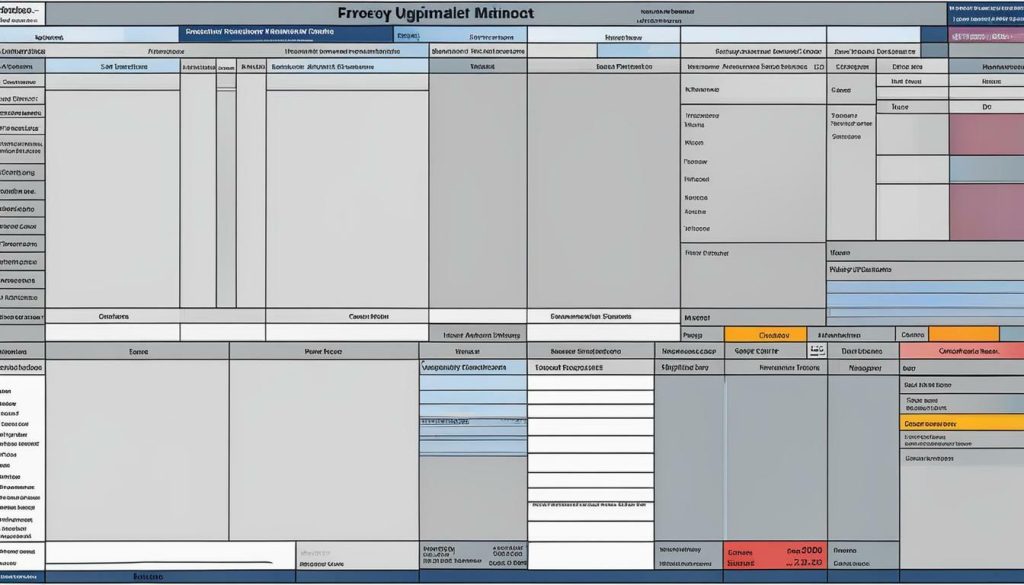
Furthermore, it is important to include a summary or highlights section in the daily report. This provides a quick snapshot of the most critical information, allowing stakeholders to grasp the key findings and actions taken at a glance.
Sample Daily HVAC Report Template
| Date | Weather Conditions | Jobsite Conditions | Work Performed | Inventory Checklist |
|---|---|---|---|---|
| Today’s Date | Sunny | Clear of debris | Installed new HVAC system in Room A | Checked and restocked supplies |
| Adjusted thermostat settings in Room B | Ordered additional filters | |||
| Conducted routine maintenance on HVAC units | Inspected and logged equipment |
In conclusion, a well-structured daily HVAC report is essential for effectively managing jobsites, documenting work activities, and ensuring smooth project operations. By utilizing templates, organizing information with headings and tables, and including a summary section, HVAC professionals can streamline their reporting process, enhance data integrity, and facilitate informed decision-making.
Addendums for Missing Information
Addendums can be added to daily HVAC reports to provide missing or incomplete information and ensure the report reflects the complete picture of the project. These addendums serve as supplemental sections that address specific fields that may have been overlooked or not captured initially. By including addendums, HVAC professionals can maintain the accuracy and integrity of their reports, allowing for a thorough and comprehensive representation of the project.
When creating addendums, it is crucial to clearly indicate the information being added or amended. This can be done by highlighting the specific field and providing the necessary details or explanations. For example, if there was a delay in the HVAC installation due to unforeseen circumstances, an addendum can be included to explain the cause of the delay and the impact it had on the project timeline.
By including addendums, HVAC professionals demonstrate their commitment to providing complete and accurate information in their daily reports. This level of transparency not only ensures better communication among team members but also enables effective decision-making based on reliable data. It is important to keep in mind that addendums should be used sparingly and only when necessary to maintain the overall clarity and conciseness of the report.
| Section | Field | Information |
|---|---|---|
| Daily Progress | Incidents | Additional details on incidents that occurred, including the date, time, and description |
| Resource Management | Inventory Checklist | Supplemental information on materials used, quantities, and any discrepancies |
| Risk Assessment | Potential Risks | Updated information on new risks identified during the project |
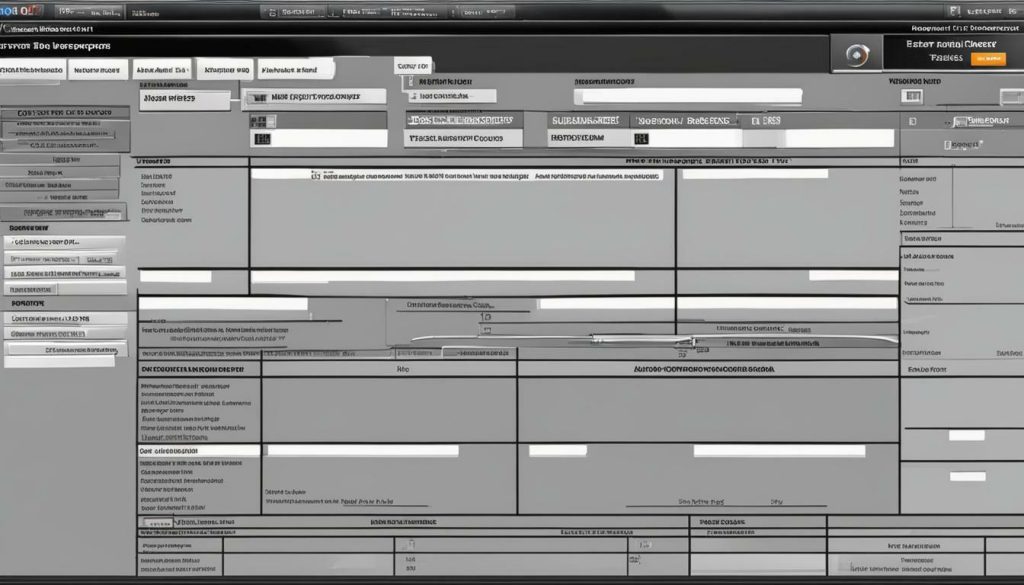
By incorporating addendums in daily HVAC reports, professionals can ensure that no critical information is missed or overlooked. They provide a mechanism to address any gaps or incompleteness in the initial report and contribute to a more comprehensive understanding of the project. With the use of HVAC report templates and the inclusion of addendums, HVAC professionals can enhance the accuracy and effectiveness of their daily reporting processes.
Documentation and Tracking in Daily HVAC Reports
Daily HVAC reports should include documentation and tracking of workers, equipment, materials, and meetings to ensure accurate project management and assessment of system performance. By capturing this essential information, HVAC professionals can effectively monitor the progress of their projects and make informed decisions.
When documenting workers, it is crucial to track their attendance and the tasks assigned to them. This information helps in evaluating individual performance, identifying training needs, and ensuring proper resource allocation. Additionally, keeping records of equipment usage allows for maintenance scheduling, identifying potential issues, and estimating future equipment needs.
| Documentation and Tracking Points in Daily HVAC Reports | Importance |
|---|---|
| Worker attendance | Ensures accurate project management and team accountability |
| Equipment usage | Facilitates maintenance planning and equipment optimization |
| Material consumption | Aids in inventory management and cost control |
| Meeting notes | Records important discussions and decisions for future reference |
Furthermore, documenting material consumption allows for better inventory management and cost control. By knowing the quantities of materials used, HVAC professionals can identify potential waste or shortages, enabling them to optimize procurement and reduce project costs.
Finally, daily HVAC reports should include meeting notes to capture important discussions and decisions made during project meetings. This documentation helps in ensuring alignment among team members and serves as a reference for future actions.
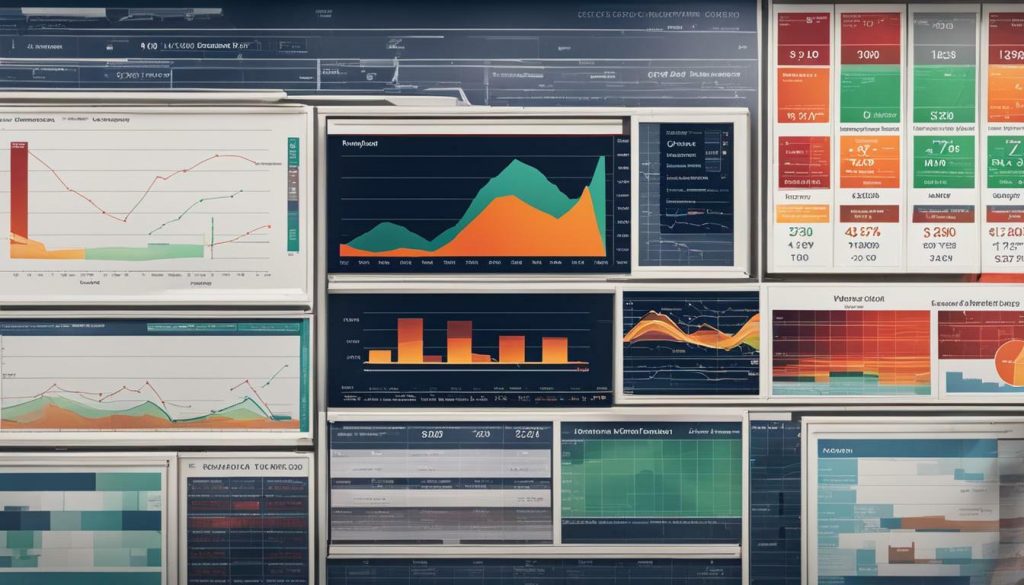
Summary:
In summary, documenting and tracking workers, equipment, materials, and meetings in daily HVAC reports is essential for accurate project management and evaluation of system performance. This information allows for effective resource allocation, maintenance planning, cost control, and decision-making. By following these best practices, HVAC professionals can streamline their reporting processes and achieve successful outcomes in their projects.
Timely Submission of Daily HVAC Reports
Timely submission of daily HVAC reports is crucial for maintaining accurate project records and facilitating effective communication between team members. These reports serve as a documentation tool that captures essential information about the daily activities, progress, and challenges encountered on the jobsite. By submitting reports in a timely manner, HVAC professionals ensure that all stakeholders have access to up-to-date information, enabling them to make informed decisions and take appropriate actions.
Submitting daily HVAC reports promptly allows project managers and supervisors to monitor the progress of the project and identify any potential issues or risks. It provides them with a real-time view of the jobsite activities, enabling them to allocate resources effectively and address any delays or disruptions promptly. It also facilitates communication between field technicians and office staff, ensuring that everyone is on the same page and working towards the project’s success.
To ensure the timely submission of daily HVAC reports, it is important to establish clear guidelines and expectations. This includes defining the deadline for submitting reports, providing templates or forms to streamline the reporting process, and communicating the importance of timely reporting to the entire team. By creating a culture of accountability and emphasizing the value of accurate and timely information, HVAC professionals can ensure that daily reports are submitted promptly and consistently.
By incorporating project management software into the reporting process, HVAC professionals can further streamline and automate the submission of daily reports. These software solutions offer features such as automated reminders and notifications, centralized data storage, and customizable report templates. They not only save time and effort but also enhance data accuracy and integrity. It is important to choose a project management software that aligns with the specific needs and requirements of HVAC projects, ensuring a seamless integration with existing workflows.

In summary, timely submission of daily HVAC reports is vital for maintaining accurate project records, promoting effective communication, and driving the success of HVAC projects. By collecting and submitting reports in a timely manner, HVAC professionals can ensure that all stakeholders have access to up-to-date information, enabling them to make informed decisions and take appropriate actions. By implementing clear guidelines, utilizing project management software, and fostering a culture of accountability, HVAC professionals can streamline the reporting process, improve efficiency, and drive project success.
Incorporating Project Management Software in Daily HVAC Reports
The use of project management software can greatly improve the efficiency and accuracy of daily HVAC reporting, enhancing overall project performance. By leveraging technology, HVAC professionals can streamline their reporting processes, improve communication, and ensure timely submission of reports.
Project management software provides a centralized platform for capturing, organizing, and analyzing daily HVAC data. With this software, you can create customized report templates that include all the necessary fields and information. This ensures consistency in reporting and eliminates the risk of missing critical details.
Additionally, project management software enables real-time collaboration among field technicians and office staff. It allows for seamless communication and sharing of information, ensuring that everyone is on the same page. By using this software, you can track progress, monitor resources, and address any issues or delays promptly.
| Benefits of Incorporating Project Management Software in Daily HVAC Reports: |
|---|
| 1. Streamline reporting processes |
| 2. Improve communication and collaboration |
| 3. Ensure consistency and accuracy in reporting |
| 4. Enhance project management and decision-making |
| 5. Increase overall project efficiency and success |
By incorporating project management software in daily HVAC reports, you can optimize your reporting workflow and maximize the value of the data collected. It empowers you to make informed decisions, identify areas for improvement, and drive continuous growth in your HVAC projects.

Key Takeaways:
- Project management software improves the efficiency and accuracy of daily HVAC reporting.
- It enables customized report templates, ensuring consistency and completeness.
- The software facilitates real-time collaboration and communication among team members.
- Benefits include streamlined processes, improved project management, and enhanced decision-making.
Ensuring Data Accuracy and Integrity in Daily HVAC Reports
Data accuracy and integrity are critical aspects of daily HVAC reports, ensuring reliable information for effective decision-making and future reference. By collecting accurate and detailed data as activities occur, HVAC professionals can provide a comprehensive snapshot of the project’s progress and identify any potential issues that may arise. To ensure the accuracy and integrity of daily HVAC reports, it is essential to include specific information that is relevant to the project’s success.
When creating daily HVAC reports, it is important to include the date, weather conditions, and physical conditions of the jobsite. This information helps provide context for the project’s progress and allows for a better understanding of any potential challenges that may arise. Additionally, including details about available resources, work performed and its status, disruptions and delays, inventory checklist, potential risks and concerns, incidents that occurred, and any other relevant information helps create a comprehensive and accurate report.
To maintain data integrity, it is crucial to double-check the accuracy of the information provided. Verifying data sources and ensuring consistency in reporting will help prevent errors and ensure the reliability of the reports. Utilizing HVAC report templates can also aid in maintaining consistency and streamlining the reporting process.
| Key Information to Include in Daily HVAC Reports | Examples |
|---|---|
| Date | May 15, 2023 |
| Weather Conditions | Sunny with a temperature of 80°F |
| Physical Conditions of Jobsite | Foundations poured, walls framed |
| Available Resources | 3 HVAC technicians, 2 forklifts, 200ft of ductwork |
| Work Performed and Status | Installed HVAC system on second floor, 50% complete |
| Disruptions and Delays | Rain delay for 2 hours |
| Inventory Checklist | 20 air filters, 5 thermostats, 100ft of refrigerant tubing |
| Potential Risks and Concerns | None at this time |
| Incidents | None reported |
| Other Relevant Information | Client requested additional vent in the master bedroom |
By ensuring data accuracy and integrity in daily HVAC reports, professionals in the HVAC industry can rely on these reports for effective decision-making, evaluating project performance, and ensuring the successful completion of projects.
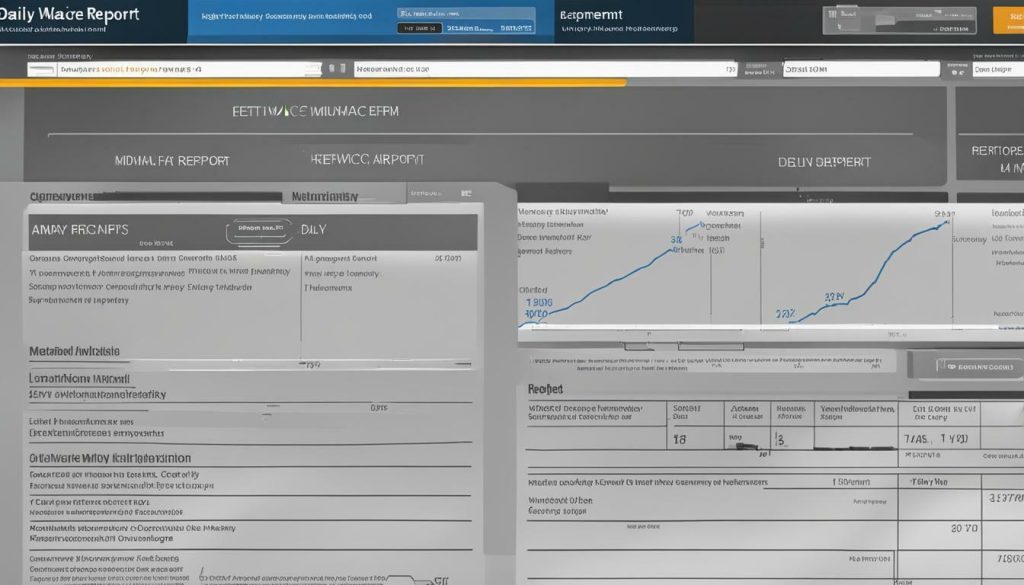
Maximizing the Value of Daily HVAC Reports
Daily HVAC reports can provide valuable insights and opportunities for improvement, making them an essential tool for maximizing project value. By collecting accurate and detailed information on a daily basis, HVAC professionals can identify trends, evaluate performance, and make data-driven decisions.
One way to maximize the value of daily HVAC reports is to ensure the reports include all the critical information needed for effective project management. This includes recording the date, weather conditions, physical conditions of the jobsite, available resources, work performed and its status, disruptions and delays, inventory checklist, potential risks and concerns, incidents that occurred, and any other relevant information. By capturing these details, the reports become a comprehensive record of the project, allowing for better tracking and analysis.
Consistency, clarity, and simplicity are also key when creating daily HVAC reports. By using a standardized format and structure, such as HVAC report templates, you can ensure that all necessary data is captured consistently across different reports. This not only improves readability but also streamlines the reporting process, saving time and effort.
In addition to proper documentation and tracking of workers, equipment, materials, and meetings, project management software can be a valuable tool for maximizing the value of daily HVAC reports. These software solutions can automate data collection, generate detailed reports, and facilitate collaboration among team members. By leveraging technology, you can improve the efficiency and accuracy of your reporting processes.
| Benefits of Maximizing Daily HVAC Reports |
|---|
| Identify trends and patterns |
| Evaluate performance and productivity |
| Make informed decisions based on data |
| Drive continuous improvement in HVAC projects |
By following these best practices and utilizing the right tools, you can make the most out of your daily HVAC reports. Remember, these reports are not just administrative tasks, but valuable sources of information that can help you optimize your projects and achieve better outcomes.

Overcoming Challenges in Daily HVAC Reporting
Daily HVAC reporting may present challenges, but proactive measures can be taken to overcome them and ensure effective reporting practices. One common challenge is incomplete or inaccurate data, which can hinder the analysis and decision-making process. To address this, it is essential to emphasize the importance of accurate and comprehensive reporting to all team members involved in the HVAC project. Providing training and clear guidelines on data collection and reporting procedures can help improve the quality of the reports.
Another challenge in daily HVAC reporting is communication gaps between field technicians and office staff. To mitigate this, it is crucial to establish effective channels of communication and ensure regular and timely exchange of information. Utilizing project management software that allows real-time collaboration and instant messaging can facilitate seamless communication and promote transparency among team members.
Resistance to change can also pose a challenge in implementing effective daily HVAC reporting practices. Some personnel may be hesitant to adopt new reporting procedures or technologies. Overcoming this challenge requires a change management approach that includes thorough training, effective communication, and demonstrating the benefits of the new reporting system. Involving the team in the decision-making process and addressing their concerns can help foster a culture of accountability and encourage active participation in the reporting process.
| Challenges | Solutions |
|---|---|
| Incomplete or inaccurate data | Provide training and guidelines on data collection, emphasize the importance of accurate reporting |
| Communication gaps | Establish effective communication channels, utilize project management software for real-time collaboration |
| Resistance to change | Implement change management approach, involve the team in decision-making, address concerns and demonstrate benefits |
Conclusion
Overcoming challenges in daily HVAC reporting is crucial for maintaining efficient operations and driving project success. By addressing issues such as incomplete data, communication gaps, and resistance to change, HVAC professionals can ensure accurate and timely reporting, leading to informed decision-making and improved project outcomes. Taking proactive measures and utilizing the right tools and strategies can help enhance the quality and reliability of daily HVAC reports, ultimately contributing to the overall success of HVAC projects.

Conclusion
Daily HVAC reports are a crucial aspect of managing HVAC jobsites, providing valuable insights and documentation for successful project execution. By following best practices and incorporating key information in these reports, HVAC professionals can ensure smooth operations and track progress effectively.
Collecting accurate data is essential, including details such as the date, weather conditions, physical conditions of the jobsite, available resources, work performed and its status, disruptions and delays, inventory checklist, potential risks and concerns, incidents that occurred, and any other relevant information. This comprehensive documentation allows for better decision-making and problem-solving throughout the project.
Proper documentation and tracking of workers, equipment, materials, and meetings play a crucial role in project management and financial purposes. By maintaining detailed records, HVAC professionals can accurately monitor project progress, evaluate performance, and identify areas for improvement. Additionally, submitting daily reports in a timely manner ensures that project stakeholders have up-to-date information for effective decision-making.
Utilizing project management software can streamline the reporting process, improve efficiency, and enhance collaboration among team members. This technology facilitates the collection and organization of data, allowing for easy access and analysis. By selecting the right software that meets the specific needs of HVAC projects, professionals can maximize the value of their daily reports.
FAQ
What should be included in daily field reports on HVAC jobsites?
Daily field reports on HVAC jobsites should include accurate information such as the date, weather conditions, physical conditions of the jobsite, available resources, work performed and its status, disruptions and delays, inventory checklist, potential risks and concerns, incidents that occurred, and any other relevant information.
What format should daily field reports on HVAC jobsites be submitted in?
Daily field reports on HVAC jobsites should be submitted in a format that includes the critical data. If necessary, addendums can be included for any missing fields.
Why is proper documentation and tracking important in daily HVAC reports?
Proper documentation and tracking of workers, equipment, materials, and meetings is essential for project management and financial purposes. It allows for accurate record-keeping and helps in evaluating project progress and efficiency.
How can the reporting process be streamlined and improved?
Using project management software can help streamline the reporting process and improve efficiency. It allows for easier data collection, organization, and collaboration among team members.
How can the accuracy and integrity of daily HVAC reports be ensured?
To ensure data accuracy and integrity, it is important to double-check information, verify data sources, and maintain consistency in reporting. Quality control measures should also be in place to prevent errors.
How can the value of daily HVAC reports be maximized?
Daily HVAC reports can be maximized by using them to identify trends, evaluate performance, and make informed decisions. Regular review of the reports and utilizing the data for continuous improvement is also recommended.
What are some common challenges in daily HVAC reporting?
Common challenges in daily HVAC reporting include incomplete or inaccurate data, communication gaps, and resistance to change. Strategies to overcome these challenges include improving reporting processes and fostering a culture of accountability.

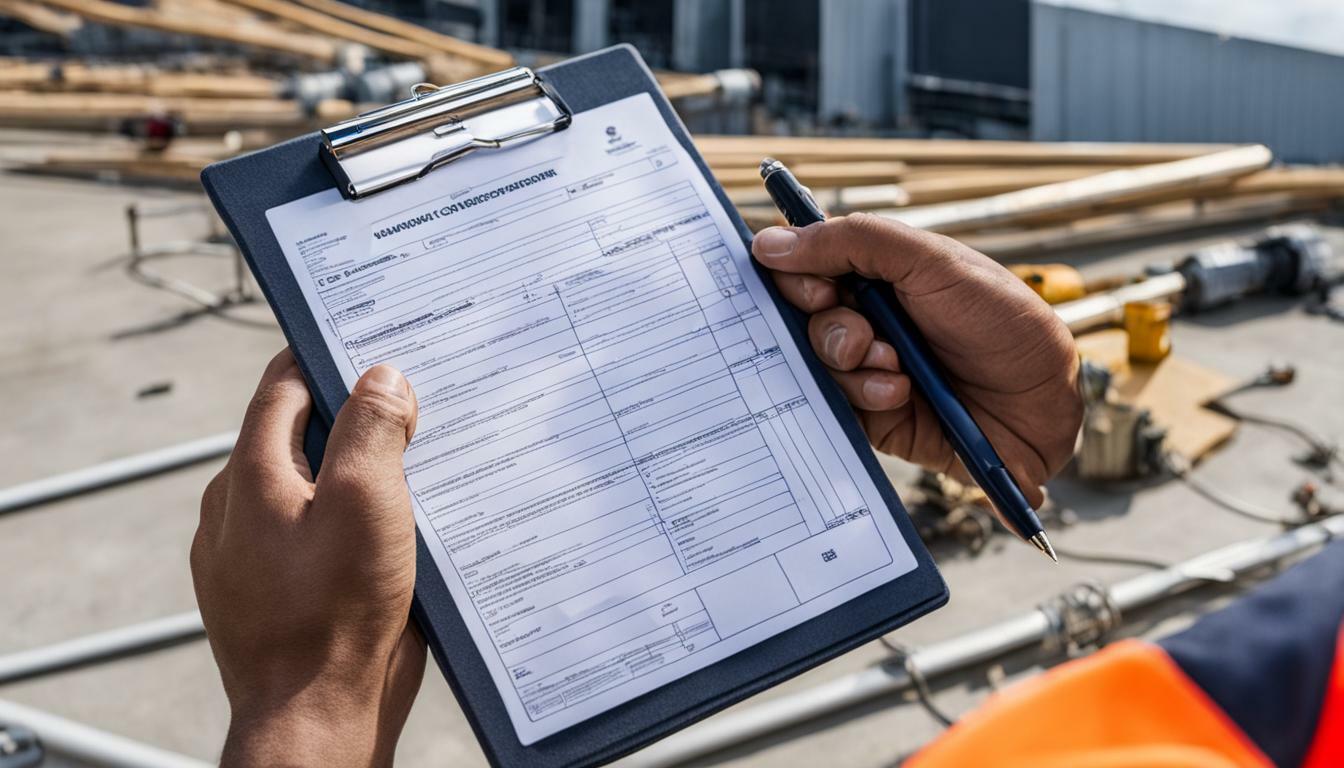



0 Comments